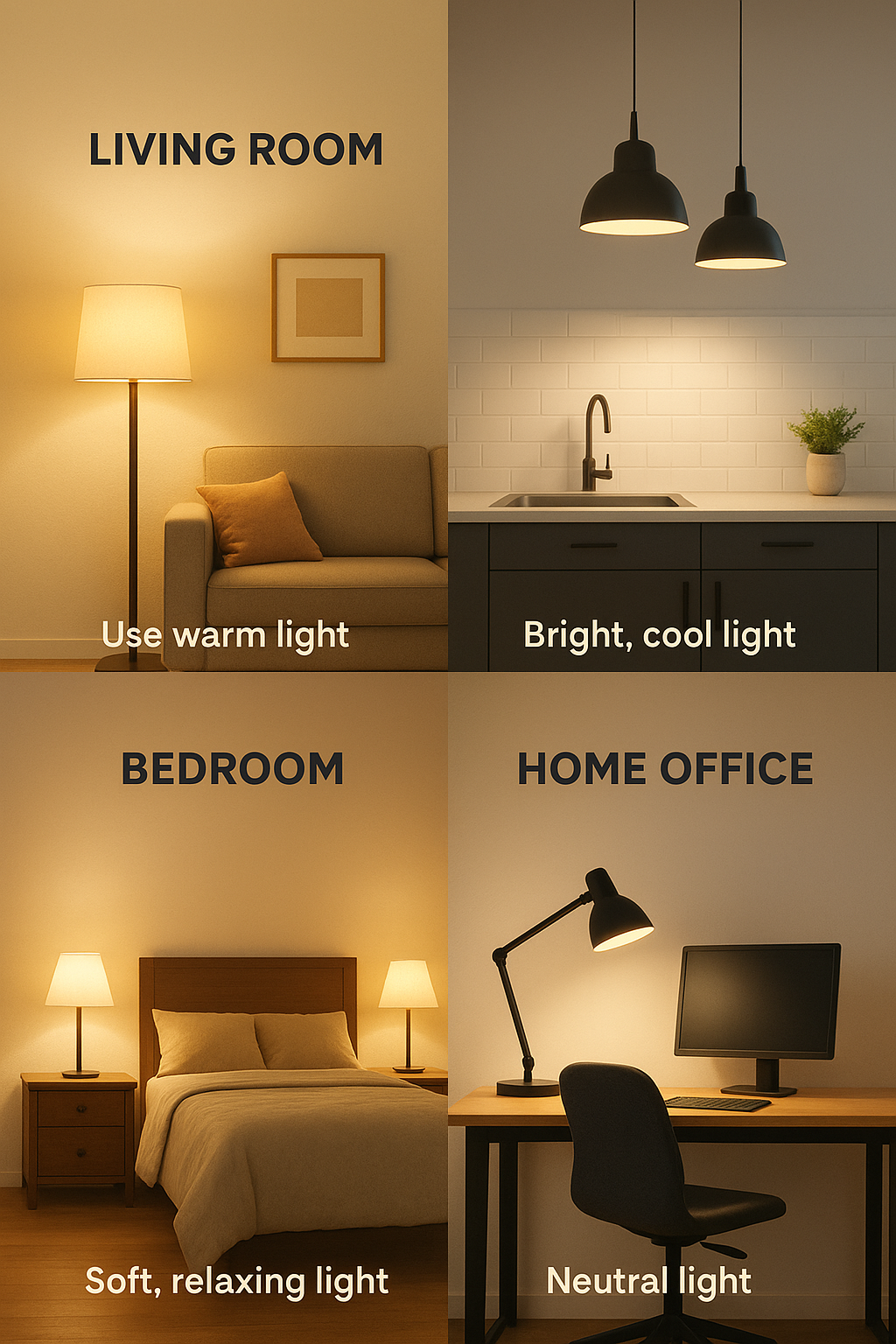
You know that feeling when you walk into a room and it just feels right?
Chances are, the lighting has a lot to do with it.
Indoor lighting isn’t just about making a room bright — it’s about setting the mood, making tasks easier, and showing off your space at its best. But here’s the tricky part: not all rooms need the same kind of light.
Let’s break it down room-by-room so you can make smarter lighting choices (and avoid buying that pretty lamp that turns your bedroom into a stadium).
1. Living Room – The Social Hub
This is where you watch movies, entertain guests, and sometimes… nap.
What works best:
- Ambient lighting – ceiling lights or recessed fixtures for overall brightness.
- Accent lighting – wall sconces, picture lights, or floor lamps to highlight décor.
- Dimmers – so you can go from “game night bright” to “Netflix cozy” in seconds.
💡 Pro Tip: Layer your lighting. A single light source often leaves shadows or feels too harsh.
2. Kitchen – The Task Zone
Chopping veggies in bad light? Not fun (or safe).
What works best:
- Bright task lighting – under-cabinet LED strips for counters.
- Overhead ambient lighting – recessed lights or pendant lamps over islands.
- Cool white light – makes food prep easier and colors more accurate.
💡 Pro Tip: Keep lights away from directly behind you—no one wants their own shadow on the chopping board.
3. Bedroom – The Relaxation Station
This is your calm zone, so soft and warm is the way to go.
What works best:
- Warm ambient lighting – ceiling fixtures or wall lamps.
- Bedside lamps – for reading without lighting up the whole room.
- Dimmable options – perfect for winding down before sleep.
💡 Pro Tip: Use “warm white” (2700–3000K) bulbs for a cozy, restful feel.
4. Bathroom – The Grooming Spot
Ever tried putting on makeup under a dim yellow bulb? Yeah… no.
What works best:
- Bright, even lighting – especially around the mirror.
- Vanity lights – at eye level to avoid shadows on your face.
- Moisture-resistant fixtures – safety first in humid areas.
💡 Pro Tip: Aim for a daylight tone (4000–5000K) near mirrors for true-to-life colors.
5. Home Office – The Productivity Zone
Lighting here affects both your mood and your output.
What works best:
- Desk lamps – focused light on your workspace.
- Neutral to cool tones – help you stay alert.
- Natural light – position your desk near a window if possible.
💡 Pro Tip: Avoid placing lights directly above your screen to reduce glare.
Quick Lighting Color Temperature Guide
| Light Tone | Best For |
| Warm White (2700–3000K) | Bedrooms, living rooms, dining rooms |
| Neutral White (3500–4100K) | Kitchens, bathrooms, offices |
| Cool White/Daylight (5000–6500K) | Task-heavy areas, garages, workshops |
Final Thought
Choosing the right lighting isn’t about following a single rule—it’s about matching the light to the purpose of the room and the feeling you want to create.
When in doubt, remember the golden rule:
Layer your lighting → Pick the right color temperature → Add dimmers for flexibility.